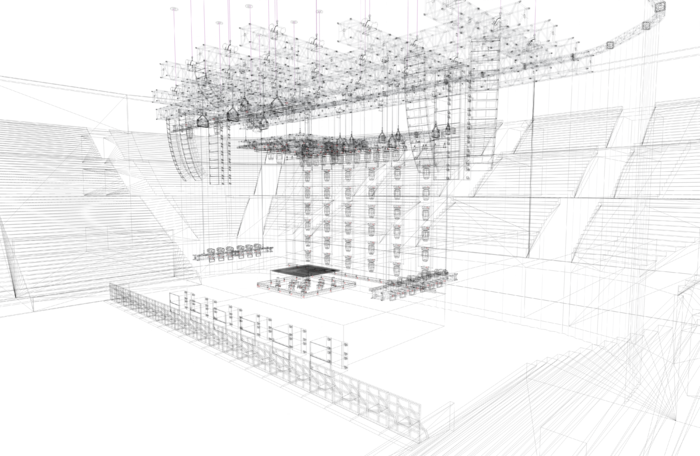Digital technologies have radically changed almost all human activities, including how theatre is made. Many production processes are greatly assisted by digital technologies and workflows.
Making theatre is a collaborative process – people must work together to make the performance happen. The largest productions require hundreds of people, organised into many different departments, to all work together towards the same goal: the moment of performance. This work requires the communication of information, and often requires the archiving of information for future use. In the first two decades of the 21st century, digital working methods have become central to the creation, distribution and recording of the information needed to make a performance happen.
One of the first digital working methods to be adopted in the theatre industry was computer-aided design (CAD) – the use of computers to aid in the creation, modification, analysis, or optimisation of a design. Starting in the 1960s, when computers were still very expensive and difficult to use, early CAD software provided an alternative to hand-drafting for technical and construction drawings. Initially adopted in engineering and architecture, as CAD became more readily available it began to be used by theatres for the construction drawings from which scenery was built. The advantages were considerable – repeated elements could be duplicated with a couple of mouse clicks, and updates didn’t need the whole drawing to be redone. Different information could be put on layers, so that different users could see what they needed, and hide the rest. Modern CAD software can work in 3D, making it easier to check that parts fit together, the set fits into different theatres for a tour, and to visualise the end result. CAD can also produce bills of materials, calculate weights, and create other data about what has been designed, saving time and reducing errors. Most recently, CAD has become CAM – computer aided manufacturing – whereby CAD drawings can directly control machine tools, for example to cut complex shapes out of sheets of plywood with speed and accuracy.
At an earlier stage of the set design process, many designers now build digital models of the scenic design, either as well as or instead of the traditional card model. 3D modelling tools allow rapid changes during the ideation phase, so many different ideas can be tried out quickly. Rendered versions of these models can show surface finishes and give an approximate idea of how the production will look. With a digital model of the theatre building, sightlines can be tested, and technical issues checked.
Lighting design has followed a similar path, with designers starting to use CAD to draw lighting plans in the late 1980s. Originally, lighting design packages were 2D, and focussed on reproducing the earlier, hand-drawn plans, together with some data management such as generating fixture lists. In the mid-1990s, the Canadian company CAST developed WYSIWYG – a 3D modelling tool that could show what the lights were doing in real-time. Initially it could only display a wireframe view of the lighting, but the technology developed, and today it is possible to visualise the entire lighting rig in a realistic way, while programming the show in a virtual model of the venue.
Lighting visualisation has combined with other departments and processes. At the Royal Opera House in London (Q7853), the visualisation studio is used not only for lighting, but also to plan complex scene changes, involving lighting, sound, video and stage automation. Video departments have developed their own workflows, using tools such as Disguise to plan complex video designs. Virtual projectors can be placed in a digital model of the performance space, so that screen sizes, lens choices, and so on can be planned. The same tool is then used as a media server to run the show during the performance, generating live the video feeds to the projectors.
Sound design also makes use of digital models, which can emulate the acoustics of the space, and calculate loudness levels based on the planned speaker layout. This can help ensure all members of the audience get high quality sound, as the sound designer intended it. Technical issues such as cabling, the number and type of amplifiers, rigging weight loads, and so on can also be worked out.
Digital technologies have not only brought a revolution in how we can model and visualise the production, they have also transformed how we communicate. Email, file sharing platforms, video conferencing, instant messaging, budget spreadsheets, Gantt charts and satellite navigation systems are now all part of the toolkit of theatre professionals. Challenges remain, however. Communication between departments, or between companies, is not always seamless. Software incompatibilities, and different standards and protocols, can cause breakdowns in communication or – worse – errors that are only discovered on stage, in the final days before performance. Fields such as film, computer games and architecture have established, industry-agreed workflows, to ensure a smooth and accurate flow of information without misunderstandings. Theatres, especially those working at the largest scales involving touring and co-productions, would benefit from such a system.
While the fundamentals of theatre performance remain the same – people gathering in a room to share an experience in real time – digital technologies have radically changed the way theatre makers work together to create the performance.
